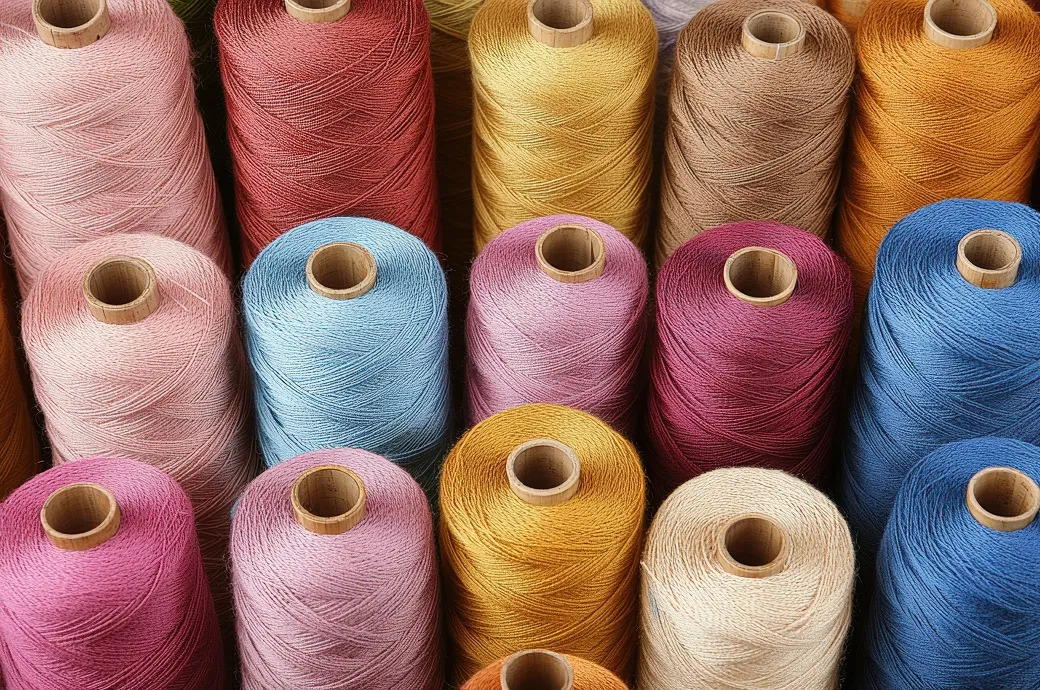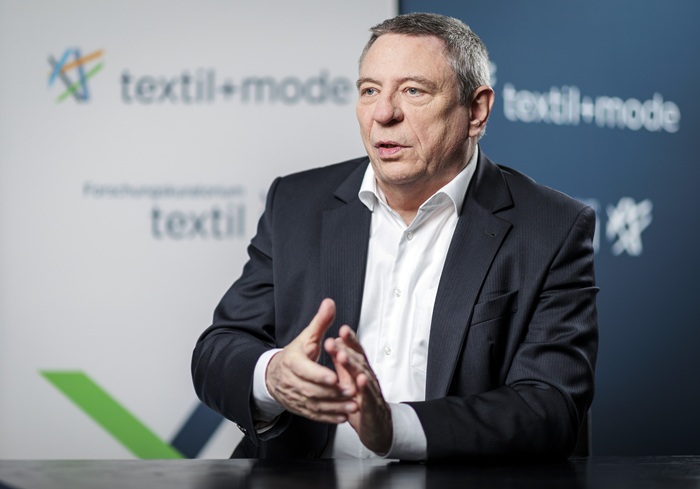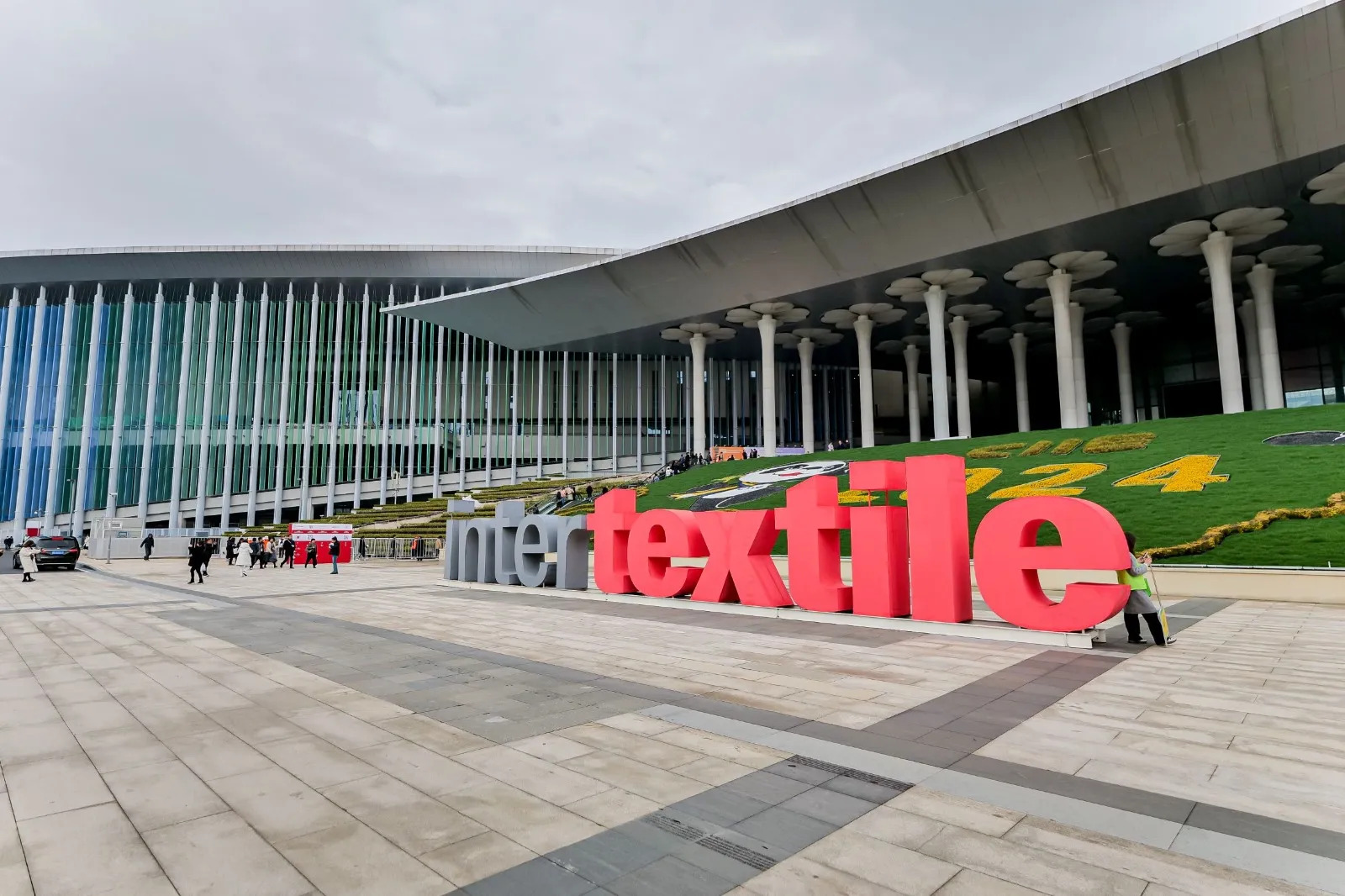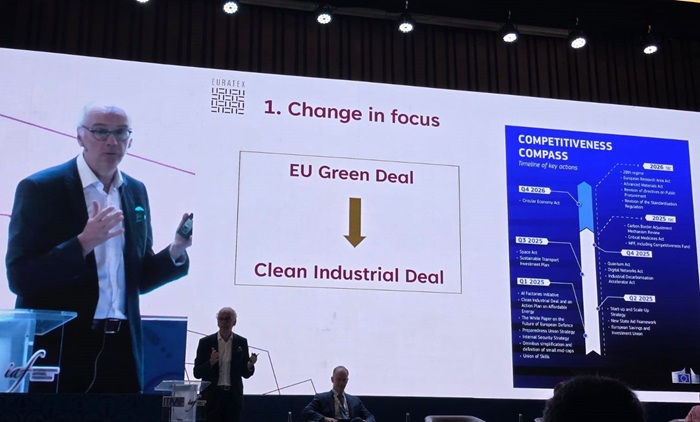FW
Italian company NIPI (Natural Insulation Products Inc) has developed a soft and ultra-light goose down fabric that can be cut and sewn like any other fabric. It’s called Thindown and is supposed to be the first and only 100 per cent natural, ecological, sterilised and biodegradable goose down fabric. Contrary to synthetic quilts, Thindown compacts the down in a completely natural way. Compared to traditional comforters, it uses even less down since it is a homogenous fabric, one that doesn't let air get through and thus doesn't need to be divided into compartments.
With this new material, it will be possible to create clothes and accessories, including shoes, out of down fabric with just a few stitches and applying all the possible treatments and personal touches. NIPI plans to increase production of the fabric from 300,000 meters in 2016 to three million in 2018.
Down is the soft plumage that geese and ducks have to keep them warm and dry. Goose down is used to fill down comforters, down pillows and other articles of bedding and clothing. It is chosen for its luxurious softness, superior resilience, loft and insulating properties, unmatched by synthetic fills.
Wool has 18 properties that make it a better material to use for garments than synthetic. Wool is breathable, appropriate for a variety of climates, elastic, fire resistant, machine washable and stain resistant. Sportswear made of wool fabric can retain odor for up to seven hours after exercise. That makes it ideal for exercise wear.
One of the most important characteristics of wool which determines its classification — as well as its price — is the wool’s fiber diameter. The finer the wool diameter, softer and more crimped it becomes. Crimp, the wave in the wool staple, contributes to the bulk and the lightness of wool fabrics. The Australian wool clip is particularly suited to use in apparel.
The softness of wool fabrics makes it suitable for baby clothing. Its breathability makes it the perfect material for baby products. Most people think wool would be best knitted into a sweater and other cool-climate apparel. But wool is not only for cool climates. There are a lot of applications for wool.
Merino wool is supported by the Woolmark company. Woolmark has developed high technology for producing the finest fabrics for designers and manufacturers. This technology has enabled them to produce a wide variety of fabrics.
Recycled swimwear is making waves with brands such as Speedo and start-ups producing swimwear made from recycled materials. Sustainable and ethical fashion is making huge strides. The fashion industry is always under criticism for the way it produces clothing quickly and cheaply and swimwear too is not spared. However, as the ethical and sustainable fashion movements gain steam, several startups are producing swimwear in sweatshop free ways and using what they claim to be more ecologically sound materials.
Speedo launched its PowerFLEX Eco swimwear collection recently, which is completely made with ECONYL Nylon 6—a fabric made from ‘end-of-life waste material’, such as old carpets and abandoned fishing nets. It’s remaining manufacturing scraps are upcycled by the nylon manufacturer Aquafil into ECONYL nylon, diverting it from the landfill.
Big brands such as Adidas, and the luxury lingerie label La Perla are some brands that use ECONYL fabric apart from Speedo. Outerknown, a clothing and swimwear line that debuted recently also uses this fabric. However, this makeover in swimwear is more populated by small, indie-sized brands, such as Bikini Empire, a line of surfer-designed separates for women made in Canada. Then, there’s Tara Grinna, which is made by hand at a family owned factory in Conway, SC. Similar swimwear lines exist that are made in the US, Canada, and Indonesia, and numerous other lines manufactured in the UK.
Designer and founder of London Denim, Simon King has teamed up with two county manufacturers to redesign the functional T-shirt. King is working with Simon Cook, of Discovery Knitting, and Ben de Zille Butler, of Zero One Nine, which owns the Sweater Shop brand, to create a new eco-friendly and high quality T-shirt, dubbed the Intelligent Design T.
King stated he wants to create a T-shirt, aimed at men, which is eco-friendly, organic, ethical and gives men an opportunity to refresh their wardrobe. He adds that this attempt goes beyond re-designing of the basic T-shirt because of the fundamental differences in production of this T-shirt and ethos behind the design.
The new T-shirt is made from two pieces of fabric, which are held together with one stitch, and can be personalised. Besides, the making of this T-shirt is local to Europe, unlike some other garments in this category, King explained. Turkey is the place from where organic cotton is sourced, then transported to Portugal where it is spun into their thread. This, then goes to Discovery Knitting in South Wigston, where it is transformed into their T-shirt jersey and then to Zero One Nine in Thurmaston, where it's made, King further explained.
A funding campaign has also been launched to raise £10,000 to produce the T-shirt. The drive has been launched on the Kickstarter global crowdfunding website. Butler, said that though theirs is predominately a knitwear company, they also work on leisure wear and like developing new things. Cook and Butler, both said they wanted to work on the project with King as they aim to support British manufacturing and businesses.
There's unsold inventory of yarn and is only rising in China. Some mills are cutting production too. The reason could be an increase in capacity of spinning mills or faltering demand for cotton yarn in global and domestic markets. The fact remains that surplus yarn is waiting to be sold. Moreover, domestic consumption has been subdued. April, May and June together saw a 7 per cent year-on-year growth. The global markets, meanwhile, is becoming competitive.
India is doing well though, analysts say yarn exports in August were 26 per cent higher y-o-y and for the period between April and August, was 7 per higher than a year ago. However, when viewed against several variables that have a bearing on world trade, the situation is more complicated. For instance, last year, yarn mills added capacity in anticipation of good prospects on home ground, following a pick-up in demand for textiles. China too decided to import more yarn than cotton as conversion costs were increasing there.
A yarn stock of 157 million kg, which is relatively high as indicated by June figures and stocks have been at these levels since October. If they hit the last peak levels of about 200 million kg, which was the case in 2011, it would be detrimental to domestic mills. Chinese imports in cotton too have dipped, while Brazil and Uzbekistan actually increased exports of cotton to China during 2014-15. This was according to a report by Edelweiss Research, which stated trade flows saw a shift among nations during the season.
However, there’s no contraction in yarn exports yet and only the pace of growth is lower. if demand on domestic or exports improves things would look up to justify the higher spindleage in the country.
Three decades ago Daejae Kim arrived in Los Angeles and entered the apparel business for in downtown’s fashion district, where a thriving Korean entrepreneurial community was beginning to take hold. Kim’s wife worked as clerk and he peddled textiles, eventually building his own wholesale and manufacturing business selling trendy women's clothing. Today, Korean businesses comprise a third, maybe even half of the businesses in the garment district. According to the Korean American Apparel Manufacturers Association, they generate around $10 billion in annual revenues and provide 20,000 jobs.
However, now, Kim and other Korean American clothing manufacturers are considering new destinations as they say they are squeezed by Los Angeles' rising minimum wage, strict labour enforcement and ebbing South American clientele following a Federal raid against alleged money laundering operations in 2014. Thus, they are looking at relocating to El Paso.
A few days ago, a broker from the Texas border town visited LA to describe factory space and talk price per square foot with the business owners. Besides, the trade association that represents 1,800 Korean-American manufacturers and distributors, later this month, would be sending a group to scout El Paso. However, Kim says that the proposal is in its preliminary stages, with only a few dozen companies until now expressing a serious interest in moving.
While they aware scouting El Paso, the trade association’s representatives also planned to meet El Paso officials and view potential factory sites. Richard Cho, President of the association, said that there's little risk that Los Angeles' garment district will abruptly empty as business owners collectively migrate elsewhere.
Over the next two years, Philippine's garment exports and other merchandise goods are expected to double to $1.5 billion. This is due to rising demand from two of the country’s biggest markets, Europe and US. The Philippine Exporters Confederation Inc (Philexport) said that Philippines’ inclusion in the generalised system of preferences (GSP) buoyed renewed interest for local goods in the two key markets and forthcoming economic integration in the Association of Southeast Asian Nations (Asean) region.
President of the Foreign Buyers Association of the Philippines (Fobap), Robert Young, says now they are embarking on a social compliance awareness programme to enable local manufacturing industry to cash in on growing export opportunities. There is a need for socially-compliant factories, or those that maintain lawful, safe and respected working conditions with no negative impact to the environment.
He mentioned that they wanted to improve labourers’ conditions and also Philippine’s economic conditions. Young says exporters would have to comply or move out because of tough competition as soon as the Asean integration comes into effect. It would be borderless trade and competition is limitless as far as price, quality and design are concerned.
As per GSP programme, duties would be eliminated on almost 5,000 types of goods when imported from 122 designated beneficiary developing and least-developed countries and territories, which also includes the Philippines. The programme aims to promote economic development by taking these steps.
The second edition of World Textile Summit (WTS) will explore sustainability strategies that create business value in the textile manufacturing value chain. Scheduled for November 13, 2015, and co-located with ITMA 2015 in Milan, WTS 2015 will be a unique one-day event that brings together the world’s most influential textile leaders to debate issues of strategic importance to the global industry. It is owned and organised by CEMATEX, WTiN and MP Expositions.
Elaborating on the concept, Charles Beauduin, President of CEMATEX, said, “ITMA 2015 will be an opportunity for manufacturers to view and compare the latest in resource-efficient textile technologies. Such investments take place against a policy background where senior decision-makers have to consider their sustainability strategies against corporate objectives. World Textile Summit 2015 will help to place sustainability in its context as a key component of value creation in any business.”
“WTS 2015 will be different from other conferences examining sustainable methods in textile manufacturing. Instead of delving into the detail of technical solutions, delegates will hear from international experts on the business value created through a strong sustainability strategy,” added Mark Jarvis, Managing Director of WTiN.
Programme development will be assisted by an advisory panel that includes Jason Kibbey, Executive Director of the Sustainable Apparel Coalition; Jonas Eder-Hansen, Programme Director of the Nordic Initiative Clean & Ethical; LaRhea Pepper, Managing Director of Textile Exchange; and Patrick Laine, CEO of the Better Cotton Initiative.
The keynote speakers include Frank Henke, VP for Social & Environmental Affairs at Adidas Group, will explain how environmental and ethical awareness can make a textile manufacturer more attractive as a potential supplier to major brands and retailers, Paula Oliveira, Director, Interbrand will focus on sustainability as a key factor in differentiating brands and companies, Helga Vanthournout, Engagement manager, McKinsey & Co will talk about the circular supply chain, Linda Keppinger, Global Materials Director, Nike will speak on sustainable textiles: trends in product development. Another session would see Gemma Cranston, Senior Programme Manager, Natural Capital Leaders Platform, Cambridge Institute for Sustainability Leadership will speak about natural capital challenges for cotton production, Vivek Tandon, Co-founder, Aloe Group will highlight embedding sustainability into the mainstream capital markets.
Alfonso Saibene Canepa, Director, Canepa SpA , Roger Yeh, President, Everest Textile Co, Taiwan and Ajay Sardana, Vice-President, Aditya Birla Group will present case studies on value creation from clean manufacturing, Burak Tun, Director Sales, Menderes Tekstil and Alan Garosi, Global Marketing Manager, Fulgar will again present case studies on values creation from sustainable materials.
www.worldtextilesummit.com
Denims available in the West come from far-flung places across the continent. Thomas Huriez, a young French man decided to walk a different path and introduce an eco-friendly version of the much-loved jeans. Huriez opened his multi-brand organic clothing store in 2007, but soon realised that there were few people who made eco denims and shoes and he didn’t have enough to stock up. So, he decided to fill the racks with an imaginative new label that ensure denim gets back to its nation of birth. The thick indigo fabric started under the name ‘Serge de Nimes’ or ‘de Nimes’ thus named after the French town from where it originated. Huriez launched ‘1083’, working on this basis and wanting to make the world a cleaner place.
His company takes its name ‘1083’ from the distance between the two furthest points of France: 1,083 km. It operates on the basis that its denims and shoes are made and sold on home ground, thus eliminating any connection with sweat shops and long-haul travel. Up and running for two years now, the brand is based the South-eastern district of Romans sur Isère and has already attracted enough attention to have 20 employees. Huriez says he is surprised by the rapid success of the project. However, he says he won’t steer away from his original plan by the lucrative potential of exports.
Huriez would, in fact like to use his business idea as a model to inspire entrepreneurs in other European countries to follow him. If there was a demand from UK, Germany, or France, though, he said, they would export for a limited period and sell with a note explaining what they were doing.
Avantex, the trade fair for high-tech fashion fabrics, will open its doors with around 30 exhibitors from September 14, 2015. The fair would welcome exhibitors from Germany, Austria, Belgium, China, France, Switzerland, Taiwan and Thailand, to its first event in Paris Le Bourget. The two days will see seminars dedicated to technology for fashion, Avantex fashion show
Visitors will be able view an assortment of intelligent fabrics developed using nanotechnology, cosmetic or luminous textiles and connected fabrics. They will also be able to develop customised finishes and special coatings with weavers, embroiderers and start-up businesses.
Commenting on the show, Michael Scherpe, CEO of Messe Frankfurt France said, “With Avantex, we are bringing something new to Paris, which will be able to boast a trade fair dedicated to products for tomorrow’s fashion. We have always been responsive to market development and are delighted to have been able to establish this event to promote technological textiles, which even the professionals don’t know much about.”
Each exhibitor is offering added value and developments which should be of interest to fashion labels and designers, many of which want to integrate technology into their creations. The selection committee is relying on experts from the Taiwan Textile Federation for its choice of exhibitors. Taiwan, the country with the majority of exhibitors, will be represented by 18 companies, six of which will be in the Taiwan Textile Federation’s pavilion. Europe will be represented by six companies.
Visitors will be able to begin their discovery of the fair at the dedicated Avantex Forum, where Louis Gérin and Grégory Lamaud, the artistic directors, will highlight a selection of the exhibitors’ themes and developments. The complexity of the added technological value influences the price of the fabrics. A series of seminars featuring speakers, exhibitors and experts from start-ups and European and Taiwanese organisations will highlight the future of fashion and how technology will have an impact on the textiles.
Visitors will also be able to experience the application of technical fabrics to fashion at four scheduled fashion shows. They will highlight creations made by French designers using fabrics from the exhibitors and collections assembled by the exhibitors themselves.
www.avantex.com












